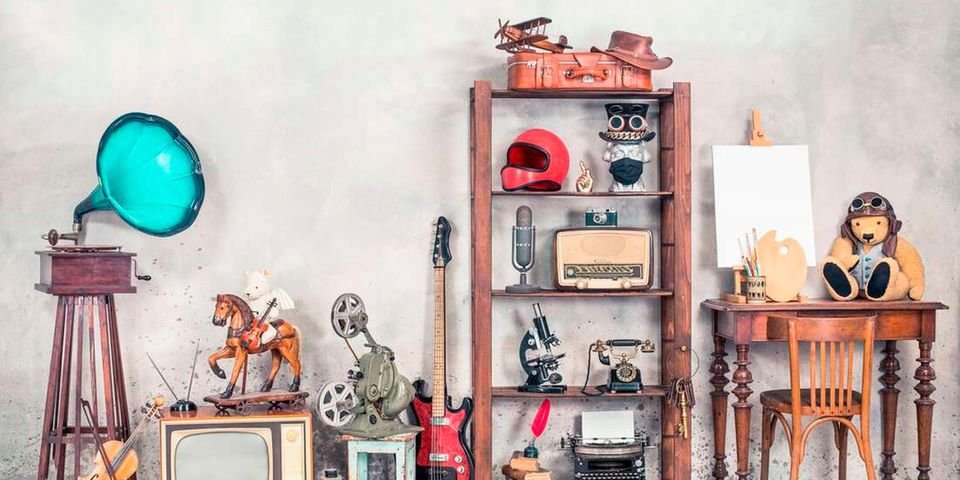Friday morning saw me in Karen, Nairobi. Located here is an antique shop that I follow on Instagram, and have been dying to visit their physical store. The shop sells preloved pieces – couches, arm chairs, dining chairs, dressers, tables of all kinds and décor accessories such as baskets and mirrors. The owner gets the pieces from auction rooms and antique fairs across Europe.
Restoration is done to the upholstery, the wooden frames are sanded down and varnished, decorative cushions are thrown on and the filling of the seats is replaced. The structure is not altered in any way, these are the bones of the piece, after all, they have to remain as they were found.
The shop also reproduces some of the pieces collected. This is done by local fundis, in their local workshop. These reproduced pieces are sold alongside the antique pieces.
Aside from this store, there are also a handful of other establishments in Kenya that sell antique pieces imported from developed countries such as the UK and the US, while others sell antique pieces sourced locally.
Incorporating antiques into your home’s styling requires a little more thought than what you would have your fundi down the road make for you. Here are a few tips to guide you on the styling process:
Antiques cost a lot of money
Unlike new or reproduced pieces, antiques leave a huge dent in your pocket. What makes them costly is their age, nature and rarity. Antiques are usually handmade pieces that have survived the years and come out on the other side bruised but breathing.
A new or reproduced sofa set would cost you, say, Sh35, 000. A refurbished antique sofa set in the same style would knock you back at least Sh150, 000. But you are guaranteed that you may be the only person in the world with that sofa set (well, one of a handful), and that the sofa itself tells a story that no other piece in your home can.
Check the antique for usability
Time and age may have beaten your antique so hard that it can no longer be used. A coffee table with a wobbly leg, a sofa with a hole in its seating, a dining table that has been attacked by wood termites, a rug with its weave wholly undone.

As much as the antique is worth thousands of shillings and has aesthetic appeal, make sure that it can be used for the purpose it was intended. Some beaten down pieces can be repaired and upgraded, say, the electric wiring of a chandelier or the knobs of a chest of drawers, the upholstery on a dining chair or the studs on an ottoman. Repairing and upgrading the pieces may make them lose their aged appeal, so be careful that the pursuit does not upset the soul of your piece.
Check the antique for originality
There are countless pieces floating out there that are presented as antique. You could end up losing a boatload of money on a knockoff piece, because you don’t know any better. Antiques are sometimes stamped with details of crafting dates, location source and the craftsman signatures. These stamps authenticate antiques, but when they are missing, you are better off engaging a professional to lend you his experienced eye. At a fee, of course.
For the amateur, there is a fine line between antique and junk
If you don’t have the eye to discern antiques, you could easily blow your money buying junk. Just because a piece is old and used doesn’t automatically mean that it is antique. Strictly speaking, an antique is a handmade piece that is over 100 years old, so a piece manufactured from faux wood in a Korean factory in 1984 is not antique but old. Also, a piece handmade from mahogany by some long-gone West African fundi in 1953, is still not antique but old.
That said, a handmade piece crafted from the rare bark of an Indian tree in 1947, whose function in your home cannot be established is not antique but junk, while a handmade piece crafted from long-forgotten ceramic in 1922 is antique, but if it upsets your home’s styling, then it is junk, I’m afraid.
Know how to incorporate antiques into your home styling
This piece that you may have purchased for thousands, if not millions of shillings may have checked all the criteria boxes mentioned above, but all this will be for naught if the piece is in your home but you don’t know how to seamlessly incorporate it into your home’s styling.
By their nature, antiques are intrinsically heavy pieces: They have aged, so they demand respect. They have survived time, they have a story to tell. They have passed through countless hands, they have absorbed their energy and are radiating back to you, into your home, good or bad energy. The piece’s styling is from centuries ago, so it is not easy for it to find a fit in your home, unless your home is a museum.
Know where you will fit your antiques before you even purchase them. And ask yourself, “Am I buying this for its aesthetic appeal? Its function? Or for both?” If you don’t have the response to this, then walk away with your money and peace of mind intact.
Credit: Source link